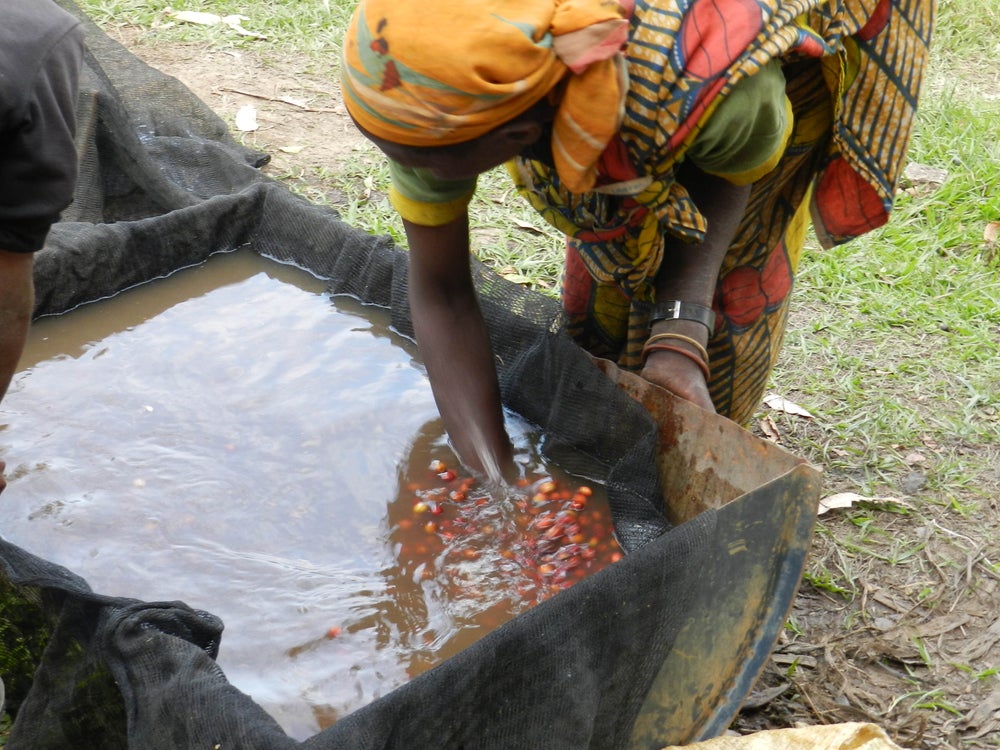From the Lab, From the Field
Tuesday, July 23, 2019
Chemistry in Coffee Processing
Chemistry is in the air and in your roasting. From the bean you buy to the heat you apply, chemistry’s mark is there. Understanding how chemical reactions alter the flavor and aroma of coffee beans from tree to cup can help you roast better beans and brew a better cup.

Chemistry in the Fields
A coffee cherry is packed with sugars. Sugar provides the necessary energy to the seed so that it can grow. There’s a race between the seed, that wants to grow, and the producers, who want these sugars to be absorbed into the bean, so that the roasted bean is sweet and delectable. As coffee roasters and consumers, we do not want the seed to grow into another plant, but to be prepared into a delicious drink.
When the cherry is picked from the tree, the fruit is ripe and subsequently, germinating. During germination the fruit produces enzymes that catalyze the fermentation process.
Washing Station Experiments
When the cherry reaches the washing station, it can be processed in a variety of ways. The way that the coffee is processed affects the sugar content and the aromas and flavors present in the final cup.
There are a wide variety of enzymes, microbes and yeasts at work in the bean and mucilage. Some are helpful: they can modify proteins, carbohydrates, and chlorogenic acids and turn them into precursors to aromatic and flavor compounds. Others are more harmful to the final taste: they can break down existing aromatic and flavor compounds, leeching flavor and smell from the bean.
These two processes are at work within every bean and they act differently whether the coffee is treated with a washed, natural or honey process.
In washed coffees the end beans have significantly less sugar than naturally processed coffees and also has less variety in flavor compounds. There’s less sugar due to a mixture of higher enzymatic activity and less fuel for the enzymes. Because the enzymes are exposed to air when the mucilage is removed, they are able to work faster, breaking down more sugars and aromatic compounds. And because the mucilage has been removed, the sugars and compounds for the enzymes to digest are taken from the bean itself, rather than the surrounding mucilage. Additionally, without the extra fuel (mucilage) for the productive processes that transform proteins and carbohydrates into flavor compounds washed coffees have fewer aromatic and flavor compounds at the end of the process. This leads to washed coffees that have higher acidity and fewer complex and varied flavors.
Natural processed coffees end up with more sugar and a wider variety of flavors and aromas due to both the increase in fuel for microbes and the lower enzymatic activity during processing. When the mucilage is left on during natural processing, the microbes and enzymes have more sugars and compounds to consume, which means the destructive processes will consume sugar from the mucilage instead of from the bean and that the productive processes will have more fuel to create aromatic compounds.
In honey processing, the reactions are very similar to natural processing. However, removing the skin protecting the mucilage allows for faster fermentation that in turn creates more aromatic and flavor compounds. The end result has a more pronounced sweetness, buttery aromas, and nutty notes.